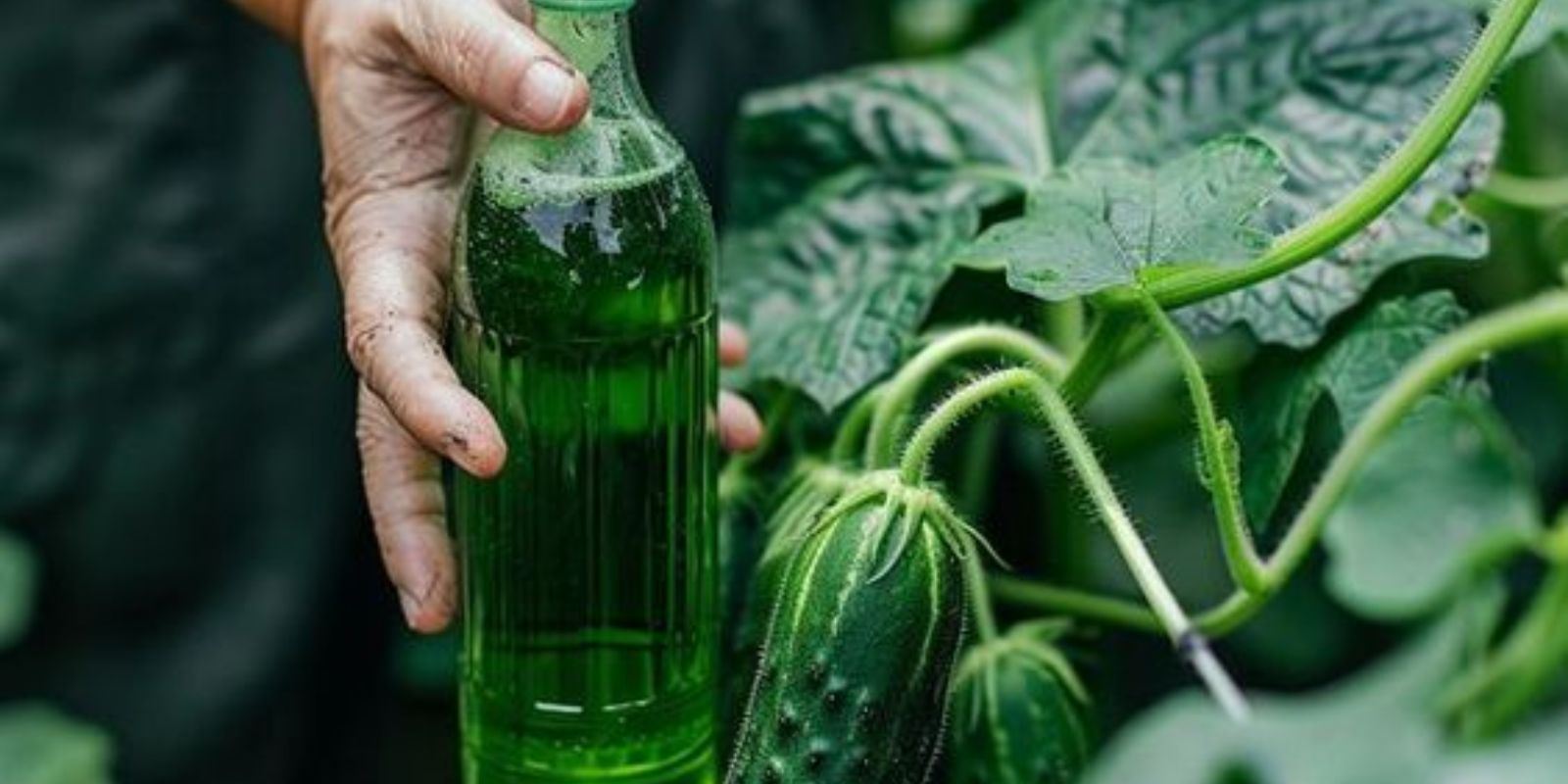Cucumbers are among the most rewarding vegetables to grow in your garden. Their crisp, refreshing taste and versatility in dishes make them a popular choice for many gardeners. However, getting the most out of your cucumber plants can sometimes be challenging. If your cucumbers aren’t growing as vigorously as you’d hoped, it might be time to explore a game-changing solution. Recently, I discovered a liquid that transformed my cucumber plants into lush, high-yielding beauties. In this article, I’ll share how this magical liquid revitalized my cucumbers and how you can achieve similar results in your garden.
Understanding the Needs of Cucumbers
Before diving into the benefits of the special liquid, it’s essential to understand what cucumbers need to thrive. Cucumbers are relatively straightforward to grow, but they have specific requirements:
- Sunlight: Cucumbers need full sun, ideally 6-8 hours a day, to grow and produce fruit.
- Water: Consistent moisture is crucial. Cucumbers require regular watering to keep the soil evenly moist.
- Soil: Well-draining, nutrient-rich soil is essential for healthy cucumber plants. They prefer soil with a pH level between 6.0 and 7.0.
- Nutrients: Cucumbers are heavy feeders and benefit from regular fertilization to support their growth and fruit production.
The Secret Liquid: What Is It?
The secret to my cucumber plants’ explosive growth was a liquid fertilizer specifically designed to boost vegetable growth. This liquid is often rich in essential nutrients, including nitrogen, phosphorus, and potassium, as well as secondary nutrients and trace minerals that are vital for plant health.
Types of Liquid Fertilizers
- Balanced Fertilizers: These contain equal parts nitrogen, phosphorus, and potassium (e.g., a 10-10-10 mix). They promote overall plant health and growth.
- High-Nitrogen Fertilizers: These are used to encourage lush, leafy growth. Nitrogen is essential for leaf development and overall plant vigor.
- Bloom Boosters: Formulated with higher phosphorus levels, these are ideal for promoting flowering and fruiting.
Applying the Liquid Fertilizer
Using the liquid fertilizer effectively involves a few key steps to ensure your cucumbers get the most benefit:
1. Choose the Right Product
Select a liquid fertilizer suited for cucumbers or general vegetable growth. Look for a product with balanced nutrients or one that supports the specific growth stage of your cucumbers.
2. Dilution and Application
Follow the manufacturer’s instructions for dilution. Over-fertilizing can harm plants, so it’s crucial to mix the fertilizer at the recommended strength. Apply the liquid fertilizer around the base of the plants, avoiding direct contact with the leaves to prevent potential burns.
3. Timing
Apply the fertilizer every 2-4 weeks during the growing season. Start feeding when the plants are well-established, and continue until they start producing fruit.
Observing the Results
Once you begin using the liquid fertilizer, you’ll likely notice several positive changes in your cucumber plants:
1. Increased Growth
Expect to see faster and more vigorous growth. The enhanced nutrient supply supports robust leaf development and stronger vines.
2. More Fruit
As the plants grow more vigorously, you should also see an increase in fruit production. Healthy, well-fed plants are better equipped to produce more cucumbers.
3. Improved Plant Health
The additional nutrients help boost the plant’s overall health, making them more resistant to pests and diseases.
Best Practices for Cucumber Care
To complement the benefits of the liquid fertilizer, follow these best practices to ensure your cucumbers continue to thrive:
1. Watering
Maintain consistent moisture by watering regularly. Cucumbers prefer soil that is evenly moist but not waterlogged. Drip irrigation or soaker hoses can help provide consistent watering.
2. Mulching
Apply mulch around the base of the plants to help retain soil moisture, suppress weeds, and regulate soil temperature.
3. Support
Provide support for cucumber vines using trellises or stakes. This helps keep the fruit off the ground, reducing the risk of disease and making harvesting easier.
4. Pest Management
Monitor your plants for pests such as aphids, cucumber beetles, and spider mites. Use organic pest control methods or appropriate insecticides if necessary.
Troubleshooting Common Issues
Even with the best care, you might encounter some issues with your cucumber plants. Here are some common problems and solutions:
1. Yellowing Leaves
Yellow leaves can indicate a nutrient deficiency, often due to lack of nitrogen. Ensure you’re applying the fertilizer as directed and check for signs of other deficiencies.
2. Poor Fruit Development
If the plants are growing well but producing little fruit, it might be due to an imbalance in nutrients or insufficient pollination. Ensure proper fertilization and encourage pollinators in your garden.
3. Disease Problems
Watch for signs of diseases such as powdery mildew or downy mildew. Improve air circulation around the plants and use disease-resistant varieties if problems persist.
Conclusion
Transforming your cucumber garden with a high-quality liquid fertilizer can yield remarkable results. By choosing the right product, applying it correctly, and maintaining overall good gardening practices, you can enjoy a bumper crop of cucumbers. The secret to my cucumbers’ wild growth was this nutrient-rich liquid, and with the tips shared here, you can achieve similar success in your garden. Embrace the magic of proper fertilization and watch your cucumber plants thrive like never before! 🥒🌟

